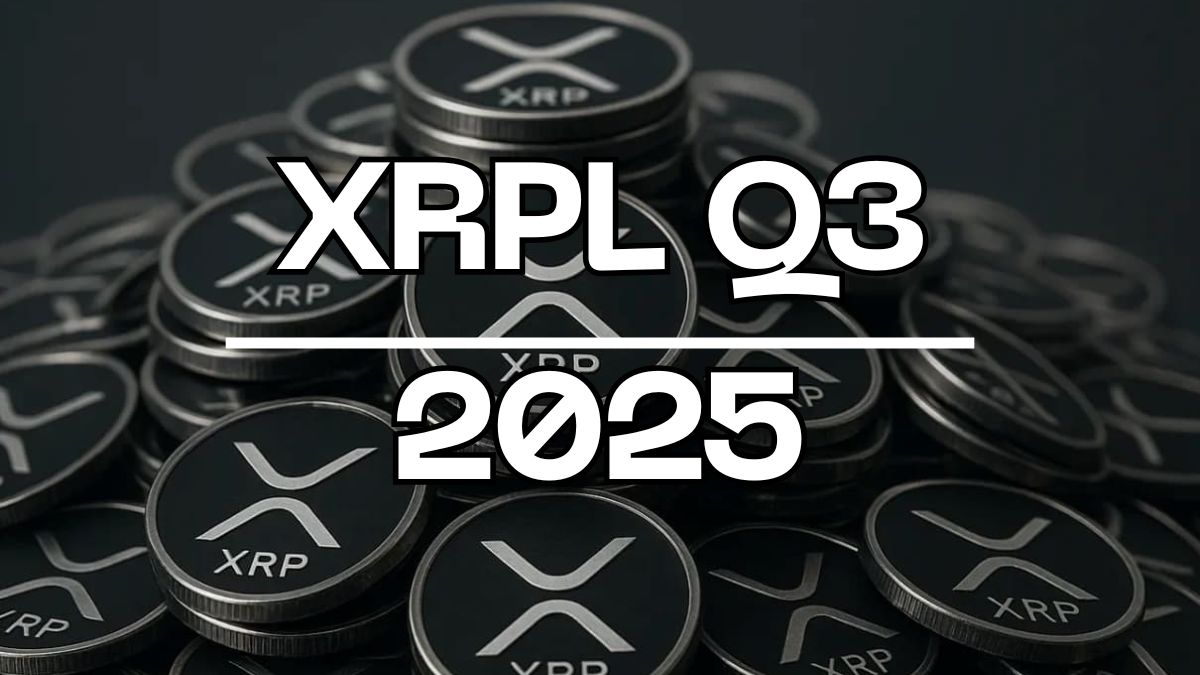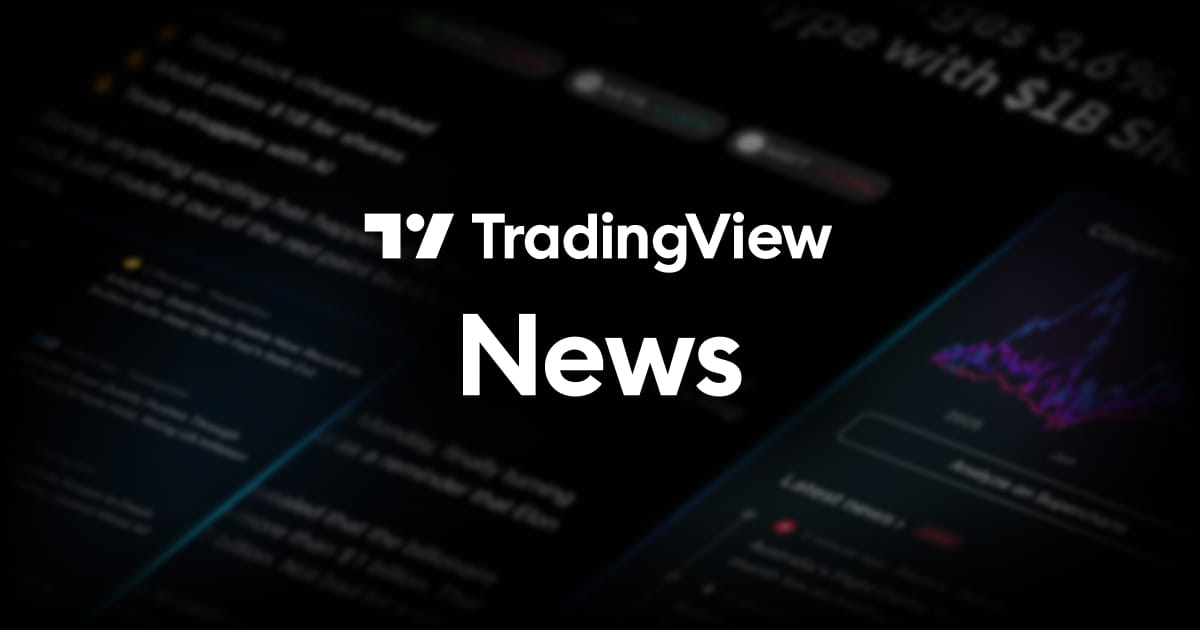
<span class="bx-next dashicons dashicons-lightbulb"></span> <span class="fw-bold"> Highlights </span> <br> Traditional finance relies on invisible, audited custodians, while crypto’s private key system is risky and irrecoverable, especially for large institutions. <br> Crypto and FinTech firms, along with tech giants like IBM, are pursuing federal and state trust charters to prove compliance and legitimacy as custody becomes central to mainstream adoption. <br> Blockchain’s decentralized design now coexists with regulated custodians using advanced key management and compliance frameworks, as firms seek OCC charters and Fed access. <br><span data-preserver-spaces="true">In traditional finance, custody is almost invisible.</span><br><br>Complete the form to unlock this article and enjoy unlimited free access to all PYMNTS content — no additional logins required. <br><span class="wpcf7-form-control-wrap" data-name="firstName"><input size="40" maxlength="400" class="wpcf7-form-control wpcf7-text wpcf7-validates-as-required form-control border-secondary" id="firstName" aria-required="true" aria-invalid="false" placeholder="First Name*" value="" type="text" name="firstName" /></span> <br><span class="wpcf7-form-control-wrap" data-name="lastName"><input size="40" maxlength="400" class="wpcf7-form-control wpcf7-text wpcf7-validates-as-required form-control border-secondary" id="lastName" aria-required="true" aria-invalid="false" placeholder="Last Name*" value="" type="text" name="lastName" /></span> <br><span class="wpcf7-form-control-wrap" data-name="YourTitle"><input size="40" maxlength="400" class="wpcf7-form-control wpcf7-text wpcf7-validates-as-required form-control border-secondary" id="inputTitle" aria-required="true" aria-invalid="false" placeholder="Title*" value="" type="text" name="YourTitle" /></span> <br><span class="wpcf7-form-control-wrap" data-name="YourCompany"><input size="40" maxlength="400" class="wpcf7-form-control wpcf7-text wpcf7-validates-as-required form-control border-secondary" id="inputCompany" aria-required="true" aria-invalid="false" placeholder="Company*" value="" type="text" name="YourCompany" /></span> <br><span class="wpcf7-form-control-wrap" data-name="YourEmail"><input size="40" maxlength="400" class="wpcf7-form-control wpcf7-email wpcf7-validates-as-required wpcf7-text wpcf7-validates-as-email form-control border-secondary" id="inputEmail" aria-required="true" aria-invalid="false" placeholder="Email*" value="" type="email" name="YourEmail" /></span> <br><span class="wpcf7-form-control-wrap" data-name="YourCountry"><input size="40" maxlength="400" class="wpcf7-form-control wpcf7-text wpcf7-validates-as-required form-control border-secondary" id="inputCountry" aria-required="true" aria-invalid="false" placeholder="Country*" value="" type="text" name="YourCountry" /></span> <br><span class="wpcf7-form-control-wrap" data-name="newsLetterChoice"><span class="wpcf7-form-control wpcf7-checkbox me-1" id="checkNewsletter"><span class="wpcf7-list-item first last"><input type="checkbox" name="newsLetterChoice[]" value="yes" checked="checked" /><span class="wpcf7-list-item-label">yes</span></span></span></span><span class="small">Subscribe to our daily newsletter, PYMNTS Today.</span> <br>By completing this form, you agree to receive marketing communications from PYMNTS and to the sharing of your information with our sponsor, if applicable, in accordance with our <a class="fw-bold" href="https://pymnts-com-develop.go-vip.net/privacy-policy/">Privacy Policy</a> and <a class="fw-bold" href="https://pymnts-com-develop.go-vip.net/terms-conditions/">Terms and Conditions</a>. <br><input id='hiddenPath' type='hidden' name='path' value='' /><input type='hidden' name='userDeviceId' id='userDeviceId' /><input type='hidden' name='pageTitle' id='pageTitle' /> <br><input class="wpcf7-form-control wpcf7-submit has-spinner btn btn-dark text-uppercase py-2 px-5 small" id="theSubmitButton" type="submit" value="Submit" /> <br><label>Δ<textarea name="_wpcf7_ak_hp_textarea" cols="45" rows="8" maxlength="100"></textarea></label><input type="hidden" id="ak_js_1" name="_wpcf7_ak_js" value="82"/><script>document.getElementById( "ak_js_1" ).setAttribute( "value", ( new Date() ).getTime() );</script><br><span data-preserver-spaces="true">A custodian bank can hold trillions of dollars in securities, ensuring that ownership records are accurate and </span><span data-preserver-spaces="true">assets can’t be misappropriated</span><span data-preserver-spaces="true">. These institutions are regulated, insured and audited.</span><br><span data-preserver-spaces="true">Cryptocurrency custody has traditionally operated in a different universe.</span><br><span data-preserver-spaces="true">Across the blockchain, possession of digital assets means controlling a private key, or a long, unique string of numbers that allows its holder to move assets recorded on the blockchain. Lose that key, and you lose the asset. No one can restore it; there’s no forgot-password button to click on blockchain networks.</span><br><span data-preserver-spaces="true">For individual users, this is empowering but perilous. For institutions managing billions of dollars, it can be a governance nightmare.</span><br><span data-preserver-spaces="true">As crypto firms are </span><span data-preserver-spaces="true">welcomed more and more</span><span data-preserver-spaces="true"> into the financial mainstream, with regulations in the United States opening the door, the question of who holds the keys has </span><span data-preserver-spaces="true">kicked off</span><span data-preserver-spaces="true"> an arms race for </span><a class="editor-rtfLink" href="https://www.pymnts.com/cryptocurrency/2025/stablecoin-issuers-race-for-bank-charters-as-fed-weighs-access/" target="_blank" rel="noopener"><span data-preserver-spaces="true">charters</span></a><span data-preserver-spaces="true"> and trust.</span><span data-preserver-spaces="true"> Once the domain of traditional financial institutions, this scramble for federal and state trust charters now spans crypto exchanges, stablecoin issuers and payments companies seeking to prove they can meet institutional standards.</span><br>Advertisement: Scroll to Continue<br><span data-preserver-spaces="true">Even legacy technology firms are entering the field. </span><a class="editor-rtfLink" href="https://www.ibm.com/us-en" target="_blank" rel="noopener"><span data-preserver-spaces="true">IBM</span></a><span data-preserver-spaces="true"> announced Monday (Oct. 27) that it plans to launch a platform designed to provide </span><a class="editor-rtfLink" href="https://www.pymnts.com/blockchain/2025/ibm-launch-platform-managing-digital-assets/" target="_blank" rel="noopener"><span data-preserver-spaces="true">custody</span></a><span data-preserver-spaces="true"> and transaction services for institutional clients by the end of 2025.</span><br><span data-preserver-spaces="true">Taken together, these marketplace movements signal that crypto custody is increasingly being normalized </span><span data-preserver-spaces="true">and not</span><span data-preserver-spaces="true"> marginalized, </span><span data-preserver-spaces="true">no matter</span><span data-preserver-spaces="true"> the industry’s allegations of “</span><a class="editor-rtfLink" href="https://www.pymnts.com/news/banking/2024/crypto-and-fintech-cry-foul-over-debanking-could-real-issue-lie-in-risk/" target="_blank" rel="noopener"><span data-preserver-spaces="true">debanking</span></a><span data-preserver-spaces="true">.”</span><br><strong><span data-preserver-spaces="true">Read also: </span></strong><a class="editor-rtfLink" href="https://www.pymnts.com/cryptocurrency/2025/institutional-grade-custody-remains-missing-link-crypto-mainstream-breakthrough/" target="_blank" rel="noopener"><span data-preserver-spaces="true">Custody Remains Missing Link in Crypto’s Mainstream Breakthrough</span></a><br><span data-preserver-spaces="true">Blockchain technology is not a single invention but two distinct ones. The first is the data structure, blockchain’s immutable ledger of transactions, where each block of data </span><span data-preserver-spaces="true">is cryptographically linked</span><span data-preserver-spaces="true"> to the one before it. The second, and arguably more </span><span data-preserver-spaces="true">important</span><span data-preserver-spaces="true"> across the financial mainstream, is the trust model, or rather the removal of the need for one.</span><br><span data-preserver-spaces="true">Before blockchain, the act of trusting in the digital world always relied on intermediaries. Banks verified balances, governments issued currency and auditors reconciled ledgers. Blockchain inverted that logic. By distributing identical copies of a ledger across thousands of computers, it eliminated the need for a single trusted recordkeeper. Instead, trust became an emergent property of the system itself, enforced by consensus, transparency and computation.</span><br><span data-preserver-spaces="true">That new trust paradigm spawned an entire industry. However, as the system grew from a few thousand hobbyists to a multitrillion-dollar market, it collided with the simple fact that the human and institutional world still needs custody. Digital assets may live on a blockchain, but corporations, institutions and governments must still decide who holds the keys.</span><br><span data-preserver-spaces="true">The result to date of the crypto custody question has been a bifurcation of the crypto landscape. On one side are the self-custodians, or users and protocols that hold their own keys and trust the blockchain’s code. </span><span data-preserver-spaces="true">On the other are the custodial intermediaries, such as exchanges, wallet providers and regulated custodians, </span><span data-preserver-spaces="true">that</span><span data-preserver-spaces="true"> reintroduce the very structures blockchain was designed to bypass.</span><span data-preserver-spaces="true"> Ironically, many of the </span><span data-preserver-spaces="true">largest</span><span data-preserver-spaces="true"> players in crypto, from </span><a class="editor-rtfLink" href="https://www.coinbase.com/" target="_blank" rel="noopener"><span data-preserver-spaces="true">Coinbase</span></a><span data-preserver-spaces="true"> to </span><a class="editor-rtfLink" href="https://www.binance.com/en" target="_blank" rel="noopener"><span data-preserver-spaces="true">Binance</span></a><span data-preserver-spaces="true">, now function as centralized custodians in all but name.</span><br><span data-preserver-spaces="true">Many crypto-native custodians also operate under a hybrid model. Assets remain on-chain, but access </span><span data-preserver-spaces="true">is managed</span><span data-preserver-spaces="true"> through institutional-grade key management, multiparty computation (MPC) and compliance frameworks. In essence, they provide a centralized layer of operational trust </span><span data-preserver-spaces="true">atop</span><span data-preserver-spaces="true"> a decentralized foundation.</span><br><strong><span data-preserver-spaces="true">See also: </span></strong><a class="editor-rtfLink" href="https://www.pymnts.com/cryptocurrency/2025/4-questions-cfos-need-to-ask-as-wall-street-embraces-stablecoins/" target="_blank" rel="noopener"><span data-preserver-spaces="true">4 Questions CFOs Need to Ask as Wall Street Embraces Stablecoins</span></a><br><span data-preserver-spaces="true">Over the past year, as the </span><a class="editor-rtfLink" href="https://www.pymnts.com/cryptocurrency/2025/crypto-companies-coming-to-america-as-regulators-relax/" target="_blank" rel="noopener"><span data-preserver-spaces="true">regulatory</span></a><span data-preserver-spaces="true"> posture of the U.S. has softened, applications for </span><a class="editor-rtfLink" href="https://www.pymnts.com/bank-regulation/2025/fintechs-pursue-direct-connections-to-the-fed-with-national-trust-bank-charters/" target="_blank" rel="noopener"><span data-preserver-spaces="true">national trust charters</span></a><span data-preserver-spaces="true"> have accelerated, with some of the </span><span data-preserver-spaces="true">largest</span><span data-preserver-spaces="true"> names in FinTech and crypto among the applicants. Firms with their own charters could offer integrated custody, payments and tokenization services without relying on third-party banks.</span><br><span data-preserver-spaces="true">During the </span><a class="editor-rtfLink" href="https://www.federalreserve.gov/" target="_blank" rel="noopener"><span data-preserver-spaces="true">Federal Reserve</span></a><span data-preserver-spaces="true">’s </span><a class="editor-rtfLink" href="https://www.federalreserve.gov/conferences/payments-innovation-conference.htm" target="_blank" rel="noopener"><span data-preserver-spaces="true">Payments Innovation Conference</span></a><span data-preserver-spaces="true"> Oct. 21, Fed Governor </span><a class="editor-rtfLink" href="https://www.federalreserve.gov/aboutthefed/bios/board/waller.htm" target="_blank" rel="noopener"><span data-preserver-spaces="true">Christopher Waller</span></a><span data-preserver-spaces="true"> advanced the notion of a “skinny” or “streamlined” master account, a form of access to the Fed’s settlement system tailored for nonbank payments firms, including </span><a class="editor-rtfLink" href="https://www.pymnts.com/cybersecurity/2025/this-week-in-stablecoins-winning-a-seat-at-the-banking-table/" target="_blank" rel="noopener"><span data-preserver-spaces="true">stablecoin</span></a><span data-preserver-spaces="true"> issuers.</span><br><span data-preserver-spaces="true">Under this proposal, firms would gain direct access to Fed payment rails, subject to tighter conditions, including no </span><span data-preserver-spaces="true">discount-window</span><span data-preserver-spaces="true"> borrowing, no interest on reserve balances, capped balances and restricted operational features.</span><span data-preserver-spaces="true"> This access is limited to payment-centric activity, not full banking operations.</span><br><span data-preserver-spaces="true">At the same time, stablecoin issuers </span><span data-preserver-spaces="true">like</span> <a class="editor-rtfLink" href="https://www.circle.com/" target="_blank" rel="noopener"><span data-preserver-spaces="true">Circle Internet Group</span></a><span data-preserver-spaces="true">, </span><a class="editor-rtfLink" href="https://www.kraken.com/" target="_blank" rel="noopener"><span data-preserver-spaces="true">Kraken</span></a><span data-preserver-spaces="true">, </span><a class="editor-rtfLink" href="https://www.bridge.xyz/" target="_blank" rel="noopener"><span data-preserver-spaces="true">Bridge</span></a><span data-preserver-spaces="true"> (</span><a class="editor-rtfLink" href="https://stripe.com/" target="_blank" rel="noopener"><span data-preserver-spaces="true">Stripe</span></a><span data-preserver-spaces="true">), </span><a class="editor-rtfLink" href="https://ripple.com/" target="_blank" rel="noopener"><span data-preserver-spaces="true">Ripple</span></a><span data-preserver-spaces="true"> and </span><span data-preserver-spaces="true">more</span><span data-preserver-spaces="true"> are </span><span data-preserver-spaces="true">racing</span><span data-preserver-spaces="true"> for </span><a class="editor-rtfLink" href="https://www.pymnts.com/cryptocurrency/2025/stablecoin-issuers-race-for-bank-charters-as-fed-weighs-access/" target="_blank" rel="noopener"><span data-preserver-spaces="true">federal trust or bank charters</span></a><span data-preserver-spaces="true"> under the </span><a class="editor-rtfLink" href="https://www.occ.treas.gov/" target="_blank" rel="noopener"><span data-preserver-spaces="true">Office of the Comptroller of the Currency</span></a><span data-preserver-spaces="true">.</span><br><span data-preserver-spaces="true">A national trust charter allows companies to operate across state lines under a single regulatory regime, rather than maintaining dozens of separate licenses. </span><span data-preserver-spaces="true">Unlike full national bank charters, trust charters do not permit deposit-taking or lending, </span><span data-preserver-spaces="true">but</span><span data-preserver-spaces="true"> they allow custody, fiduciary services and settlement</span><span data-preserver-spaces="true">, </span><span data-preserver-spaces="true">functions increasingly critical to digital asset businesses.</span><br> Crypto Custody Becomes Land Grab for FinTechs, Nonbanks <br> Western Union to Launch Stablecoin and Cash Off-Ramps for Digital Assets <br> Nvidia and Nokia Form $1 Billion Communications Pact <br> Unlimit Integrates Apple Pay Disbursements Into FinTech Platform <br>We’re always on the lookout for opportunities to partner with innovators and disruptors.<br><br><a href="https://news.google.com/rss/articles/CBMimgFBVV95cUxNaUJQRVlFcUFOWXBlWXpsSUxPLUJqdXN0OUZiZEJya1NMcnJGZy0xR3BpTmN5Xy1tajhBLXBNSDhhclYzaHd1TFJGdGtNejExY1Vld1JYZlNZNF82UW93OGFoNW1uVktsdDRORUJEUmJoNnRkeXlrQ2xRaGZSUGlnU0REM3pfM1FHRmNoa2FSOEFEMkE3dHNIZ3p3?oc=5">source</a>















